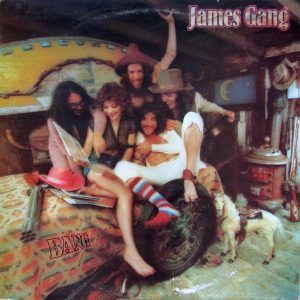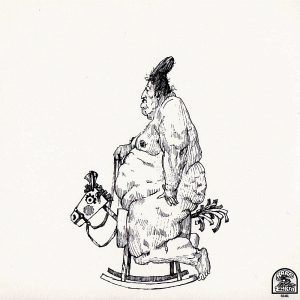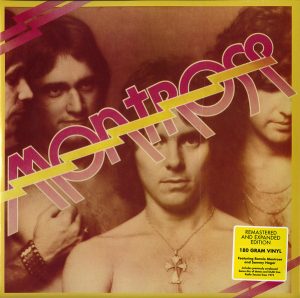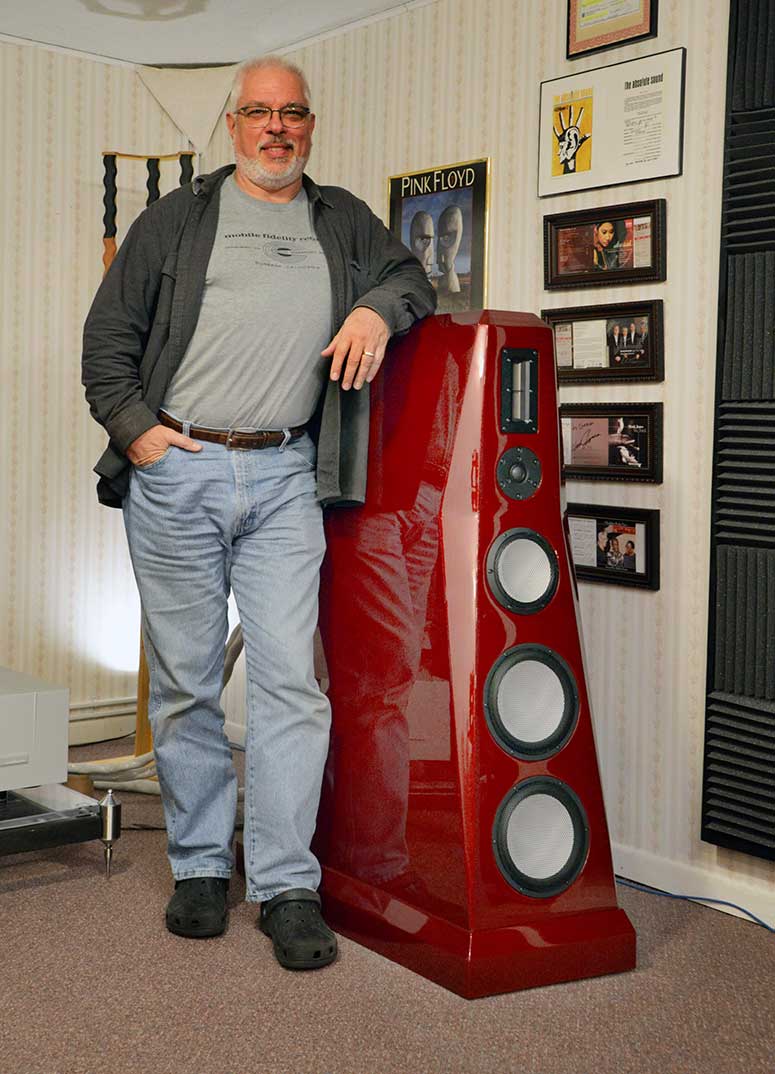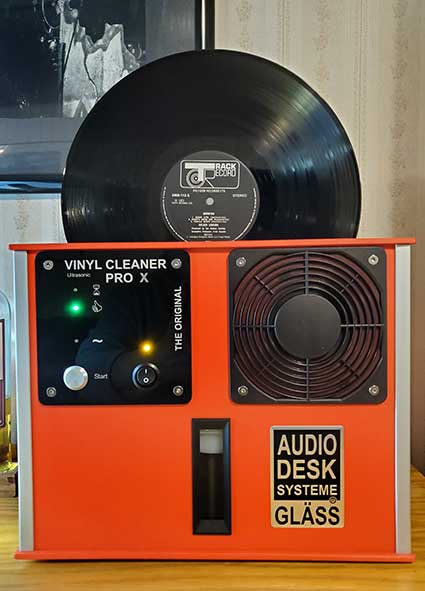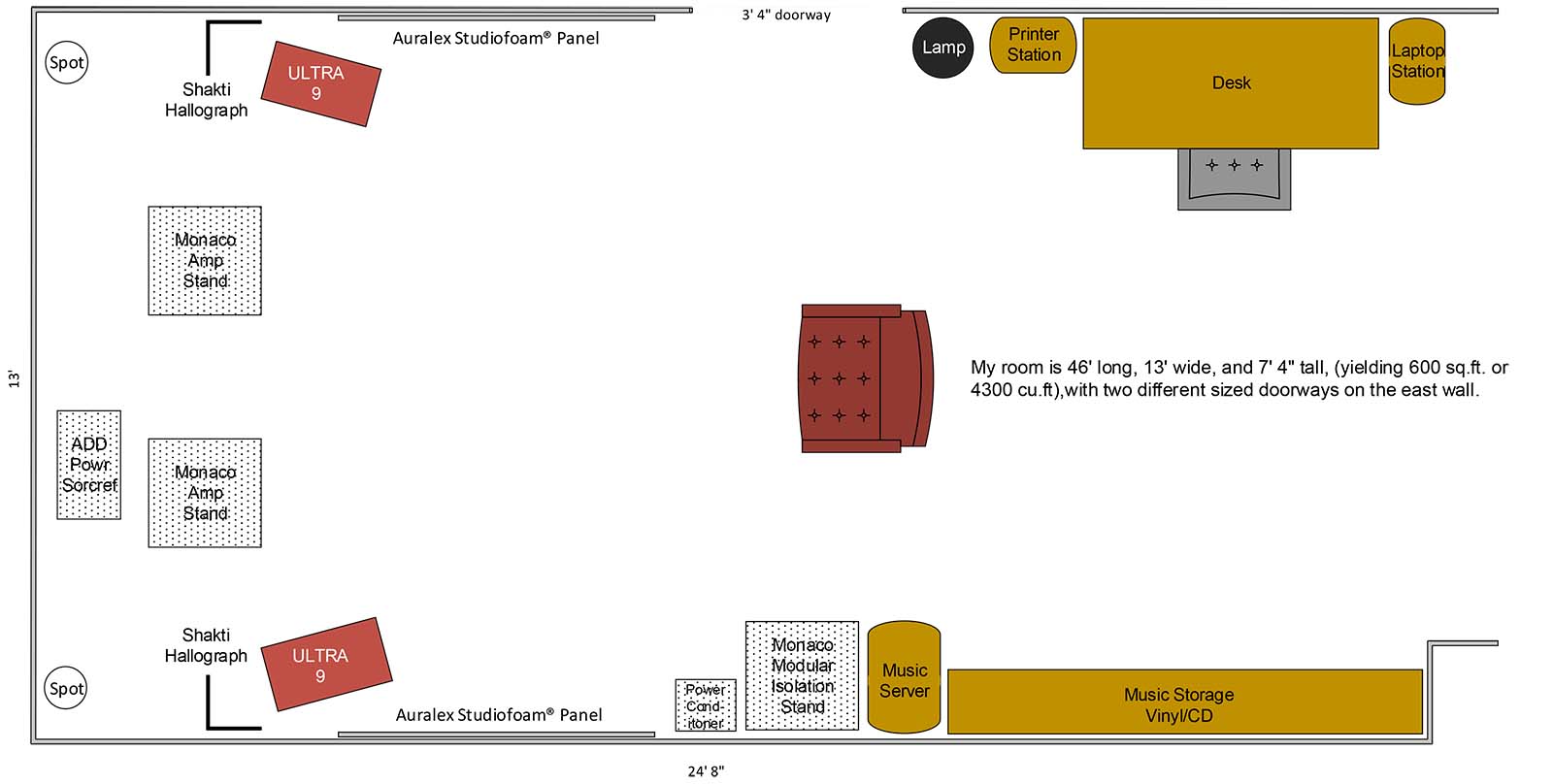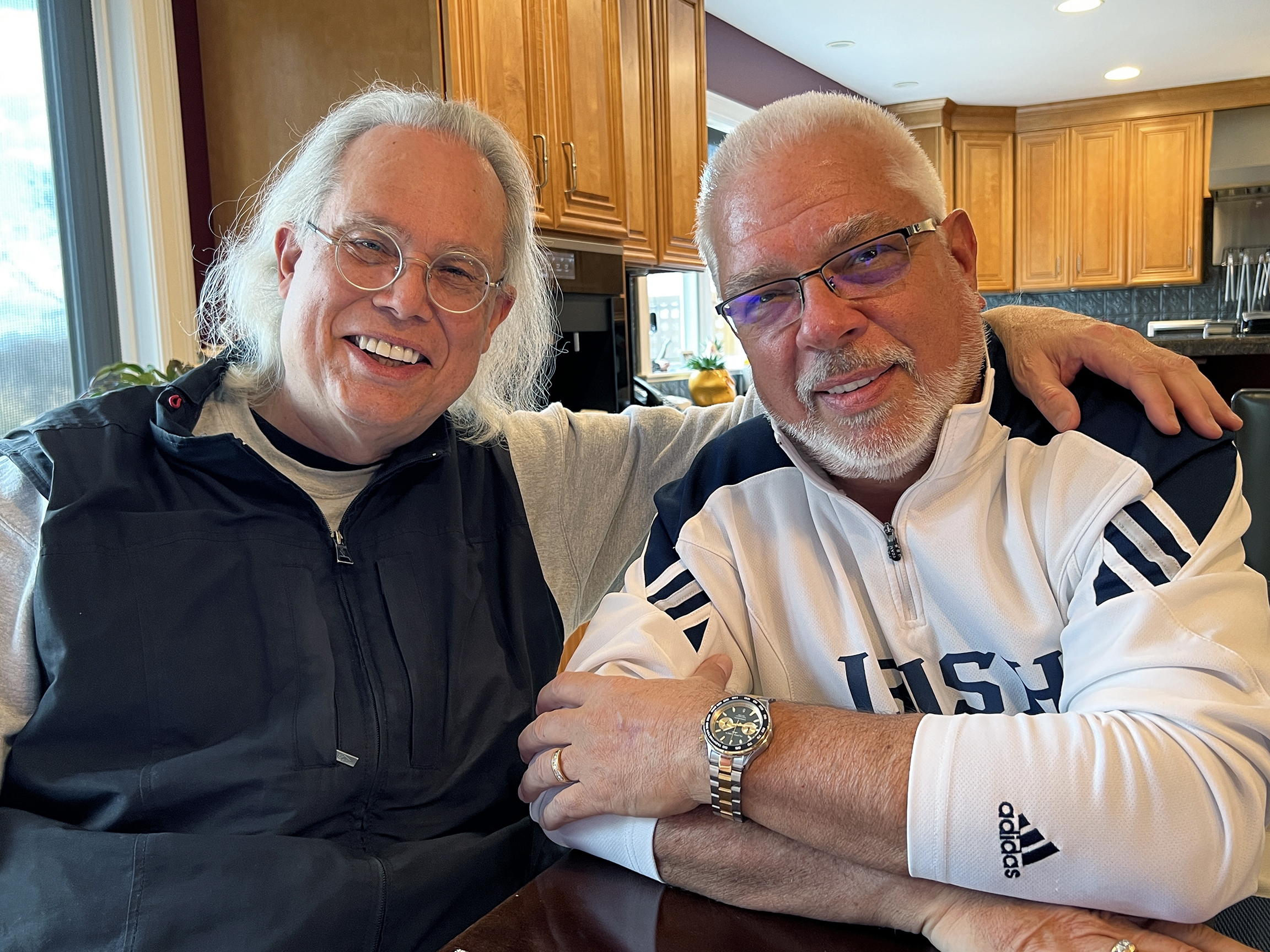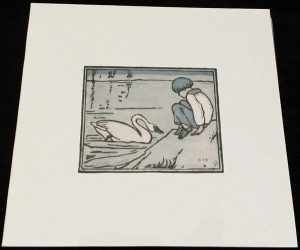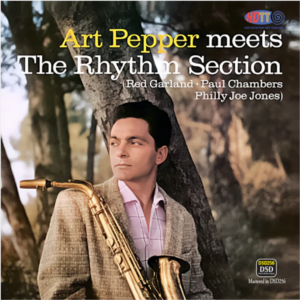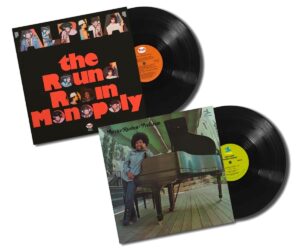James Gang, Bang, SD 7037, ATCO Records, 1973
By the end of the 1960s, following the emergence of such dynamic UK-based trios as Cream and the Jimi Hendrix Experience, one of the brightest trios to appear on the subsequent American scene was the James Gang.
Though founded by drummer Jim Fox in 1966 with fellow Kent State University students, guitarist Glenn Schwartz and bassist Tom Kriss, that original lineup was short-lived! When Glenn Schwartz chose to join Pacific Gas & Electric before they had made their first record, Fox and Kriss opted to carry on after adding a new singer/guitarist, one future star-in-the-making, Joe Walsh.
When their first release, 1969's Yer' Album, also one of the first recordings that up-and-coming producer Bill Szymczyk was involved with, didn't show much traction on the charts, Tom Kriss was the next to depart, replaced by bassist Dale Peters, resulting in the James Gang's early definitive lineup.
Without question, Joe Walsh's influence was more than just effective, as evidenced by the group's sophomore release, 1970's classic Rides Again, which delivered the AOR classic "Funk #49." While never topping the singles charts, "Funk #49" has become one of rock's most instantly identifiable tracks, introducing us to Joe Walsh's knack for creating distinctive guitar riffs. In fact, his talents were so apparent to the Who's Pete Townshend, that as well as becoming an outspoken supporter of Joe's talents, the Who signed the James Gang for their next tour.
Even though they were seeing a swell of recognition—and airplay—Joe Walsh was itching to launch a solo career. Though he stayed the course for 1971's Thirds, which spawned another marginally successful classic rock radio standard, "Walk Away," as well as the Live in Concert recording that same year, Walsh moved on. After a brief focus on some solo work, he soon joined forces with what had been Linda Ronstadt's backing band, the Stone Poneys, to form one of the 1970s' biggest acts, the Eagles.
At this point, Jim Fox abandoned the idea of the trio format and chose to draft new band members, vocalist Roy Kenner and guitarist Domenic Troiano. Perhaps not so surprisingly, Joe Walsh's shoes proved hard to fill, as their next two albums, Straight Shooter and Passin' Thru, failed to garner much attention or airplay, motivating Domenic Troiano to leave, taking up his luck with the Guess Who. But the post-Joe Walsh James Gang soon surprised themselves, and the bulk of their growing fanbase. As they were working on a plan to head into the studio for their sixth studio album (not counting their 1970 original motion picture soundtrack, Zachariah), 1973's Bang, they seemed to have found the hoped-for missing ingredient with the addition of guitarist Tommy Bolin.
Seemingly just what the doctor ordered, having just dissolved his short-lived fusion band Energy, Tommy Bolin's creative playing, fueled by his interest in the burgeoning jazz-fusion scene brought a little taste of Weather Report, Miles Davis, and Mahavishnu Orchestra to this more traditional rock outfit.
Right from its opening, the LPs first two cuts, "Standing in the Rain," and "The Devil Is Singing Our Song," let you know that this record had no relation to any of the lackluster efforts of the past, or even the Joe Walsh pop-riff driven era. Their bold, fresh style in both musical structure and execution is addictive in its flow and ebb, based more on the inflections and drift more customary to the fusion world than the more common power cords and riffing language of rock. Followed by "Must Be Love," we get something that may be a bit more of the conventional James Gang fare, but along with Bolin's inspired playing, Fox's percussion work stands out here. Next up, while the wistful "Alexis" doesn't quite sound like the other tracks, its timekeeping changes, the playful "Elvis" imitations, and Bolin's lead play conspire to make it a highlight just the same. The closing track on side one, "Ride the Wind," gives us another look into the understated power, splendor, and compositional style first delivered with this side's two opening cuts, showing yet again the freshness of the approach, and the band's willingness to adopt musically stylistic themes outside the typical rock standards.
Side two opens with "Got No Time For Trouble," a superb amalgamation of the compositional tack taken on both "Alexis" and "Must Be Love," with its engaging, guitar-driven closing, setting the stage for one of the most unique cuts, and brave choices, to appear on a rock album of the era, the a cappella "Rather Be Alone With You." Though barely over two minutes, the entire band uses clapping and vocalizations to create one very unique cut, and along with Roy Kenner's lead and their close harmonizing, it results in one of the most amazing, daring, and interesting, cuts from the annals of Rock in 1973. Next up is the fusion influenced "From Another Time" Its combination of opening staccato guitar lines and congas eventually meander into a more typical James Gang boogie, closing with an explosion effect, to abruptly bring it all to a conclusion. Then there is the closer, "Mystery." Again, a serious departure from the riff-driven success the "Gang" had followed with Joe, it is undeniably a beautiful and haunting way to close this milestone release.
To my mind, Bang feels considerably less like a "band" album and instead more closely resembles the efforts of a group of keenly talented studio musicians hired to make a statement recording, say, like a Steely Dan record, and simply represents the pinnacle in the band's output. Here, not only does Roy Kenner deliver sensational "arena rock" style vocals, but the contributions of the firm, unwavering, and underrated rhythm section of Jim Fox and Dale Peters, make Bang THE definitive James Gang LP, and a record that should be in every collection.
As with the litany of previous guitarists to play with the James Gang, Tommy soon grew disenchanted and left the band after 1974's successful, but to my ears, not as persuasive, Miami. Following in Walsh's footsteps, Tommy launched his solo career, releasing two solo works, Teaser and the remarkable Private Eyes, before taking a brief stint with Deep Purple. His debut appearance was on their 1975 Come Taste the Band record, and given all the other changes that Purple was going through, they disbanded the following year.
Sadly, though there is no question that he was still refining his songwriting abilities and was a uniquely gifted guitarist, Tommy passed away from a senseless drug overdose in 1976 at the age of just twenty-five.
While there was a 2019 UK remastered release, it has a distinct "digital" flatness of dimensionality and is a bit blander in tonality than the original 1973 US ATCO first pressing (SD 7037). While the record does not tick off all the "audiophile" checkboxes, it is eminently listenable, and vastly more engaging than any of the later pressings I've heard.
HERE are more details about this record at Discogs.
HERE is a link to this recording on Qobuz.
Rare Earth, Ma, R 546L, Rare Earth Records, 1973
Most listeners will have heard of this Detroit-based group that successfully crossed over into the limelight by blending their bar band rock roots with the signature Motor-City R&B sound to become the most successful white group in the Motown organization.
Formed as the Sunliners in the Detroit area in 1960 by Pete Rivera, aka Peter Hoorelbeke, drummer and lead vocalist, the rest of the group included Rod Richards on guitar and vocals, Kenny James on keyboards, John Persh on bass, trombone, and vocals, with Gil Bridges on sax, flute, and vocals. The band spent years playing club dates in and around Detroit, though not attracting much attention.
By 1968, it had become apparent to them that their name was neither indicative of their musical style, nor particularly memorable. Wanting a change, they settled on the much hipper-sounding Rare Earth. Soon thereafter Verve Records signed them to a record deal, culminating in their debut album, 1968's Dreams/Answers. When it didn't find much of an audience, they were immediately dropped. But touring to promote the album gave them plenty of on-stage time to further hone their skills and musicianship.
Though Detroit's most successful record label had managed to achieve tremendous success with their soul and R&B acts, Motown Records, founded by legendary record executive, producer, songwriter, film and television producer, Berry Gordy, decided to launch a spinoff label to focus on rock. He was attracted to Rare Earth's sound, which was a persuasive amalgam of rock and R&B and the story goes that when he signed them, he asked them to help him settle on a name for this new label. Though they jokingly suggested he should just call it Rare Earth, he surprised them by agreeing.
While they were the only white act signed with Motown Records that was regularly charting, it was their unique fusion of bar-based rock & roll with polished rhythm & blues stylings, augmented by their honed musicianship that drove their success. It wasn't long after signing with this new, ambitious label that they began to release a steady string of reasonably successful records, starting with 1969's Get Ready. The album became their most successful yet, defining their approach, and they soon earned a reputation for transforming their songs into extended jams, with their biggest hit, "Get Ready," often lasting for half an hour at concerts.
After four more studio records and one live release, it was 1973's Ma that is their standout. Written and produced by one of Motown's greatest behind-the-scenes figures, Norman Whitfield, none of the tracks were composed or written by anyone from the band. Norman Whitfield, who was inducted into the Songwriter's Hall of Fame in 2004, was well-known for his work with the Temptations, and he wrote all five tracks for this release, including two ("Smiling Faces Sometimes" and "Hum Along and Dance") in tandem with his regular collaborator, Barrett Strong. While the album produced no chart-topping hits, it did very well, fairing far better commercially than their earlier records, and it is now their most celebrated record.
Simply put, Ma is a foot-stompin', toe-tappin' masterpiece. Talk about blue-eyed soul! What a missed gem this one is. From its provocative, distinctive cover art, to its rambling bluesy soulful song about a hard-luck mother that spans the entirety of side one, through side two's four-song tour-de-force, this record is a milestone for 1973. I was the only kid in my group who "got" this record, and it was only a handful of my older friends who would flash a knowing smile as they would see me driving around town in my car, windows down, with this release blaring from my Craig PowerPlay 8-Track Tape Deck.
While the Temptations had released the song "Ma" on their Masterpiece record just two months earlier in February, nobody ever tore up on a song about mom like Rare Earth does on the title track to this record, which fills all of side one at just over seventeen minutes. If you can sit still through side two's opener, "Big John is my Name," go get yourself fitted for a coffin - ‘cause you must be dead. From its captivating preamble, the haunting arrangement and cock-sure drive of "Smilin' Faces Sometimes" will leave you in a sweat. "Hum Along and Dance" will have you doing just that, and the simulated female orgasmic vocalizations in the background dispersed throughout the instrumental closer to side two, "Come With Me," may leave you reaching for a cigarette!
This album is superb and is on my short list representing the very best of 1973s hidden treasures. While Discogs shows some 65 versions of this record have been released over the years, the only remasters seem to have been released on CD. To this point, the best-sounding pressing I've heard is still my original 1973 US first pressing on Rare Earth records, R 546L.
HERE are more details about this record at Discogs.
HERE is a link to this recording on Qobuz.
Montrose, Montrose, R1 557787, Rhino Records, 2 x 180g 12" LPs, Reissue, Remastered, 2017. Original release: Montrose, Montrose, BS 2740, Warner Bros. Records, 1973.
In case you've not yet noticed, the underlying theme for this installment would appear to be the year 1973. With that in mind, let me close with one more stunner from that year that deserves your attention, the eponymous debut from Ronnie Montrose.
Before this release, the twenty-five-year-old guitarist had been a successful session musician, sitting in on Van Morrison's Tupelo Honey album, produced by Ted Templeman, as well as playing on Herbie Hancock's 1971 Mwandishi record. If the name Ted Templeman rings a bell, it should, as he would go on to produce not only this LP, but many other well-regarded records from the Doobie Brothers, Little Feat, Aerosmith, Eric Clapton, Van Halen, and a host of others.
I first heard the name Ronnie Montrose when he was a member of the Edgar Winter Group, playing on the monstrous hit single "Frankenstein," from the 1972 best-selling album They Only Come Out at Night. I had tickets to that sensational Edgar Winter tour, and the warmup band was, not coincidentally, the James Gang!
There is no doubt that the early 70s saw the creation of many monstrously influential, time-tested, and enduring hard rock releases that are now seen as classics. Though Montrose may not enjoy the same degree of notoriety as other albums of that era, its success and impact have proven it to be an amazingly influential and significant release with lasting influence, blazing the path for similar guitar slingers, like the remarkable impact the young Michael Schenker would exhibit upon UFO starting with their 1974 sensation, Phenomenon.
While much of its staying power comes from the energy and raw power of Ronnie's impressive guitar chops, this was also the record that introduced a very young and powerful vocalist, Sammy Hagar, to the rock arena. Rounding out the original foursome was yet another rock-solid rhythm section, with Bill Church on bass and drummer Denny Carmassi.
Released on October 17, 1973, just four days after Sammy Hagar's twenty-sixth birthday, this explosive, powerful, rockin', bad-ass record, featuring Ronnie's biting guitar assault, left no doubt why the band, and this album, were simply called Montrose. Starting with the relentless anthem "Rock the Nation," fueled further by a furious Carmassi percussion performance, there is no doubt you've left the commonplace rock record in the dust. This newly established pace and power continue with "Bad Motor Scooter," which just makes you more anxious to join in and take that ride. Next, we are treated to "Space Station #5," with its inescapable drive and propulsive main riff. Next, the infectious and rockin' "I Don't Want It," closes out one of the most energetic and hard-hitting sides in the genre.
Side two opens with an infectious, raucous take on the 1947 Roy Brown jump blues standard, "Good Rockin' Tonight." Their choice of arrangement and blistering execution of this track demonstrates an influence that is clearly evident in the early recordings of many later 70s California bands, like the early Van Halen. Next, we get the impact, grit, and drive, of "Rock Candy," one of the most memorable cuts on this record. Followed by the bluesy, rag infused "One Thing On My Mind," another surging track with no shortage of rhythmic momentum or guitar flourishes. The side closes with "Make It Last," giving us one of Ronnie's most inventive and memorable melodic lines, with searing instrumental fills and riffs.
This record is a balls-to-the-wall, flat-out, guitar-driven, hard rockin' record from start to finish, without a single cut you'll want to skip along the way. While I loved the drive and power of the original 1973 US Warner Bros. Records release, BS 2740, it was a bit murky and dark. As of this writing, I prefer the additional clarity, focus, and dynamics captured by the 2017 US Rhino Records double 180G LP release, R1 557787. You optical disc fans should go out of your way to hear the 2005 US HDCD Audio Fidelity remastered on gold CD, AFZ 028.
HERE are more details about this record at Discogs.
HERE is a link to this recording on Qobuz.




